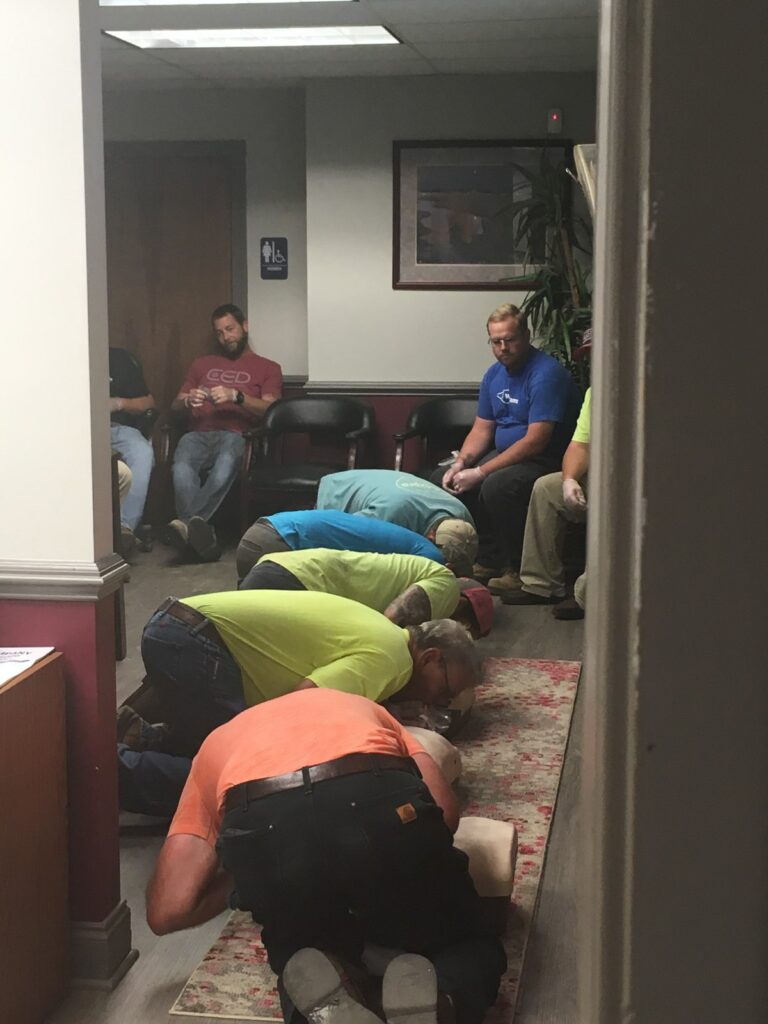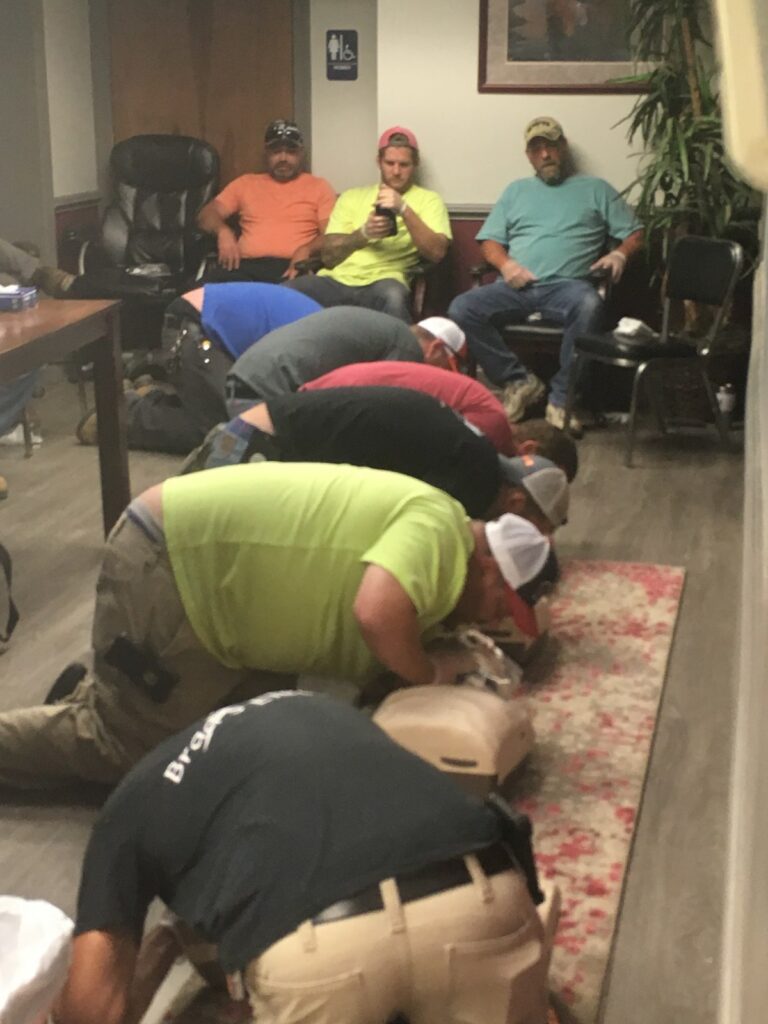CPR training
We completed CPR training for annual. It’s always required OSHA requirements are set by statute, standards and regulations. Our interpretation letters explain these requirements and how they apply to particular circumstances, but they cannot create additional employer obligations. This letter constitutes OSHA’s interpretation of the requirements discussed. Note that our enforcement guidance may be affected by changes to OSHA rules. Also, from time to time we update our guidance in response to new information. To keep apprised of such developments, you can consult OSHA’s website at https://www.osha.gov.
C) Emergency Procedures. Employees exposed to shock hazards and those employees responsible for taking action in case of emergency shall be trained in methods of release of victims from contact with exposed energized electrical conductors or circuit parts. Employees shall be regularly instructed in methods of first aid and emergency procedures, such as approved methods of resuscitation, if their duties warrant such training. Training of employees in approved methods of resuscitation, including cardiopulmonary resuscitation and automatic external defibrillator (AED) use, shall be certified by the employer annually.
It does not mean that ALL employees or electricians MUST be trained but those who respond MUST be trained and someone must be able to respond within 4 minutes. I do believe every electrical worker should be trained on methods of release and we have this built into our NFPA 70E training but it is a good idea to do basic electrical first aid and CPR training. It is so much easier today than ever and even if you made the additional training open to those interested when you train the 75 workers.
The intent is that if a worker is hurt in an electrical event and they have a cardiac event, the response time will be sufficient for CPR and/or AED that the worker will have a high probability of survival and a low probability of brain damage.
Thanks for the question,
Hugh Hoagland

Brad’s Electric 
Electrical CPR Training 

